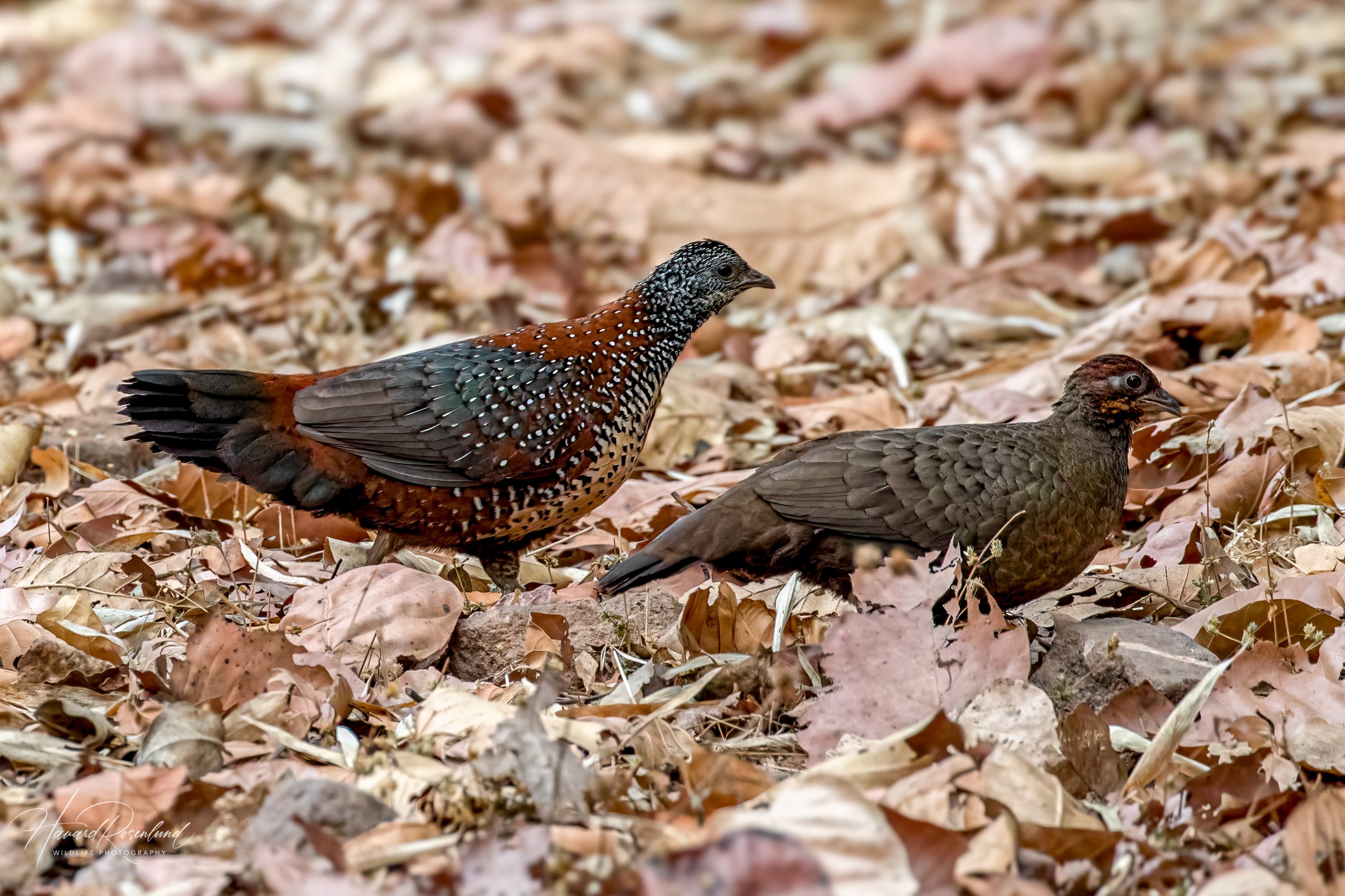Description
The painted spurfowl (Galloperdix lunulata) is a species of landfowl found primarily in the rocky and scrub forests of central and southern India. This medium-sized bird measures about 27-34 cm (10-613.4 in) in length and is easily recognizable by its beautifully patterned plumage. Males exhibit a rich chestnut color with white spots that gets denser on its glossy greenish-black head, while females are slightly duller with a more rufous tinge. One distinguishing feature of the spurfowl are their long, strong legs with sharp spurs used for fighting and foraging. The painted spurfowl’s spotted appearance sets it apart from red spurfowl (Galloperdix spadicea), which has a more uniform reddish-brown color.
Diet & habitat
The painted spurfowl prefers rocky hill slopes and dry scrub forests, often near water sources. These habitats provide ample cover and foraging opportunities. Their diet is varied, consisting mainly of seeds, berries, insects, and small invertebrates. They forage on the ground, scratching the leaf litter with their powerful legs to uncover food. This bird is usually seen in pairs or small family groups, moving quietly through their habitat.
Nesting
The breeding season of the painted spurfowl typically spans from March to June, coinciding with the onset of the monsoon. Mated pairs often remain together throughout the year, showcasing coordinated movements and mutual preening, which strengthens their bond. The male’s distinctive call, a series of loud, cackling notes, can often be heard echoing through the hills, serving both to attract mates and to ward off rivals.
The female lays 3-5 eggs in a shallow scrape on the ground, usually hidden under dense vegetation or rocks for protection. Incubation lasts about 18-21 days, primarily undertaken by the female. After hatching, the chicks are precocial and leave the nest shortly to follow their parents, learning to forage almost immediately. Fledging occurs roughly 3-4 weeks after hatching, during which both parents are involved in caring for the young.
Status
The painted spurfowl is listed as least concern on the IUCN Red List. Despite this, localized threats such as habitat destruction due to agricultural expansion and human encroachment pose potential risks. Conservation efforts focusing on habitat preservation are crucial to ensure that these birds remain common in their natural habitats.






